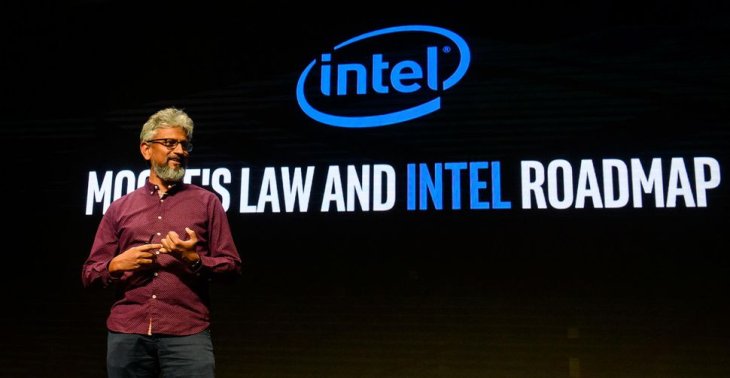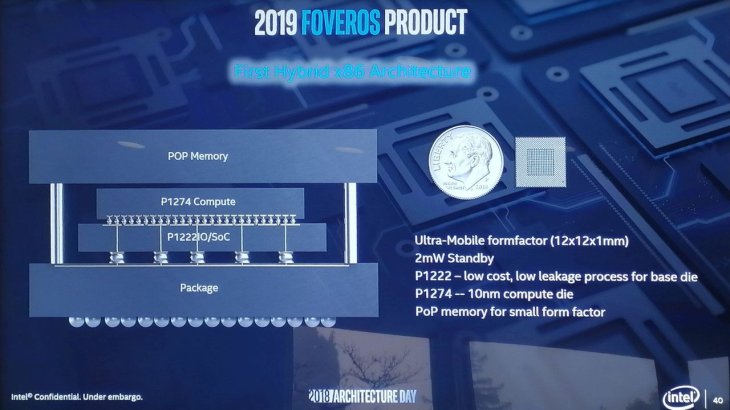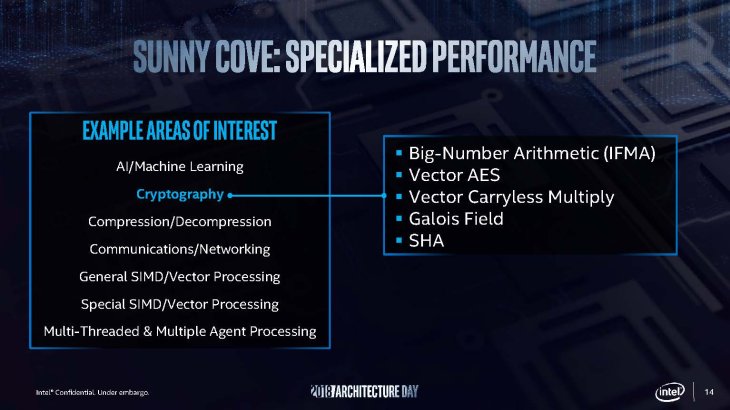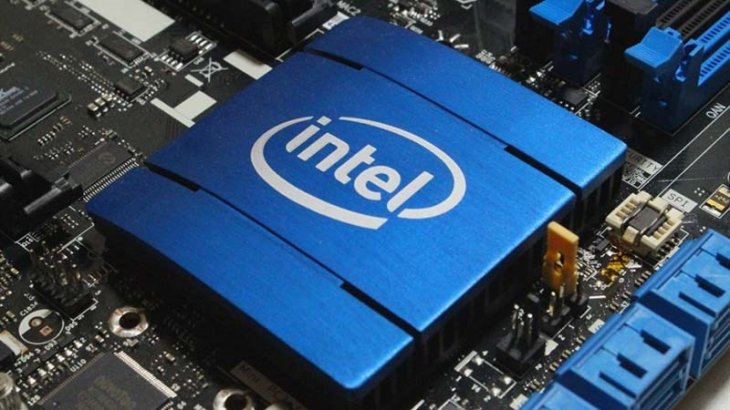Intel 3D Chip Stacking Will Bring About A New Generation Of PC
Dhir Acharya - Dec 15, 2018

Intel has recently announced its 3D stacking technology and how it will innovate our computers.
- Steam Deck VS ROG Ally, Which is the Better Handheld PC?
- Intel Announced 11th-Gen Rocket Lake Processors, Rivaling AMD Ryzen Chips
- How To Mirror Phone To PC? Here Are 7 Ways To Do So
It has been difficult for Intel chip maker to maintain its leading position due to the rapid rise of its biggest rivals, TSMC and Samsung. However, the company has got its own plan.
Intel has recently announced Foveros, a manufacturing technology that can directly stack various chip elements on top of one another. The announcement was made at an event where Intel touted its chip architecture plans, it is likely that this new technology from Intel will improve the chip performance considerably and increase revenues for the company. Intel said the first Foveros processor will be available next year.

A senior principal engineer at Intel, Wilfred Gomes, said that they can build computer systems with the breakthroughs that existing approaches cannot do easily. He also explained Foveros is a word originating from Greek, which means “unique and special.”
If 3D stacking chips are really beneficial like Intel’s words, maybe you should get a new PC to enjoy the boost in performance and the saving of power.
David Kanter, an analyst at Real World Tech, considered 3D stacking as a big thing.

According to Kanter, similar technology has appeared in a few chips specifically made for machine learning and AI software, but they all have extremely high prices. The newly perfected technology from Intel sounds a lot more affordable.
For the last couple of years, Intel has made little innovation, its 2018 models almost stayed the same with those of 2017. It was reported that Apple will use its own A processors for its laptops, ARM is expanding its chip technology from phones to servers, and Amazon has just decided to design its own processors based on ARM’s technology.
Now, in a “six-pillar” approach, Intel provides choices among a range of six elements namely architecture, manufacturing process, chip communication interconnect, security as well as software, from which users can have the best at any given time, allowing them to exploit new abilities of hardware.
Regarding Intel’s new 3D stacking chip, Ben Bajarin, an analyst at Creative Strategies, said it looks like the pressure from manufacturing issues has pushed Intel into a necessary innovation, or even a blessing. This not only tested and humbled the giant chip maker but also brought them back on track to keep up with the entire industry.
Sailing to Sunny Cove
At the Wednesday event, Intel also revealed a now family of processors code-named Sunny Cove that the company will use for both of its PC Core chips and server Xeon chips. The Sunny Cove is made to do multitasks, reduce energy consumption, as well as improve certain computing tasks, such as AI and cryptography.
Intel stated that the Ice Lake will be the first of this family to roll out in 2019, but did not say anything further.

Plus, at another event, Intel announced Optane, a new technology to improve long-term storage so that it can run fast enough to compare with RAM in phones and PCs.
Other big announcements include the 11th generation of graphics systems for its processors which performs twice as well as the present tech. And a newly developed approach for providing OneAPI, the single software interface which can operate on various chip technologies, namely the x86 processor lineage, FPGA chips, and specialized modules for AI graphics and other specific tasks.
Patrick Moorhead, an analyst at Moor Insights and Strategy, thinks Intel is experiencing the most radical shift ever seen for decades.
First Foveros chips to roll out in 2019
As stated by Intel, 3D stacking technology has been around for years, used for memory processors like those on your smartphone, but the company’s technology allows more elements.
Consequently, the chip maker can produce a wider range of chips. For example, Intel can generate better multi-computing-element chips, resulting in thinner and lighter laptops like MacBook Air from Apple. Qualcomm is also onto this kind of technology, hoping to release its own PC processors.

Intel’s Foveros chips expected to roll out in 2019 will be smaller than a dime. The chip will consume 2 milliwatts of power only, which can help Intel compete with ARM.
Another critical point to note, this approach can help Intel improve its heavy-duty data center processors and power new technology implementations like Mobileye tech in vehicles’ computer vision or speeding up AI through Nervana processors.
The 3D stacking will additionally help Intel dramatically increase the speed of connections between processing logic circuitry and the high-speed memory which provides data for the circuitry, considering the fact that current data transfer is getting overloaded.
10-nanometer ahead
R&D engineers at Intel may be happy about this.
Intel has reluctantly delayed its 10-nanometer processors. The creation of this processors is based on Moore’s Law that gradually double numbers of transistor electronics which we can squeeze onto a chip.
But Samsung, the Taiwan Semiconductor Manufacturing Company, and TSMC have already made 7-nanometer chips. What to be noted here is that the way companies measure their chips are different.
Intel said that it’s aiming at selling 10nm processors widely.

In its statement, the chip maker said revenues are growing in line with its expectations, and the company is set to release 10nm chips during the holiday season in 2019. It also denied a claim in October that it axed stopped the 10nm processors.
There are a few choices for Intel in the long term. One of them is the spintronics, with which the firm will redefine the most basic elements of chips.
The company said the 3D stacking tech will roll out with 10nm processors and will continue to appear in the coming innovations in its manufacturing.
Chip breakthrough only comes once in a while, and Intel has been researching 3D stacking technology for the last four or five years. So, it’s reasonable for the company not to expect anybody to catch up quickly.
Featured Stories

ICT News - Dec 25, 2025
The Visibility Concentration Effect: Why Half the Web Isn’t Qualified Anymore

ICT News - Jul 05, 2025
Windows 11 is Now the Most Popular Desktop OS in the World

ICT News - Jul 02, 2025
All About Florida’s Alligator Alcatraz: A Smart Move for Immigration Control

ICT News - Jun 25, 2025
AI Intimidation Tactics: CEOs Turn Flawed Technology Into Employee Fear Machine

ICT News - Jun 24, 2025
Tesla Robotaxi Finally Hits the Streets: $4.20 Rides That'll Make You Hold Your...

ICT News - Jun 24, 2025
World's First Flying Humanoid Robot Takes Flight

ICT News - Jun 24, 2025
When Closed Source Met Open Source: Bill Gates Finally Meets Linus Torvalds After...

Gadgets - Jun 23, 2025
COLORFUL SMART 900 AI Mini PC: Compact Power for Content Creation

ICT News - Jun 22, 2025
Neuralink Telepathy Chip Enables Quadriplegic Rob Greiner to Control Games with...

ICT News - Jun 20, 2025
Comments
Sort by Newest | Popular